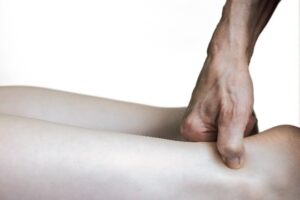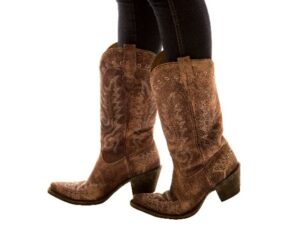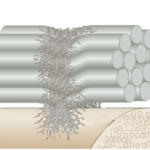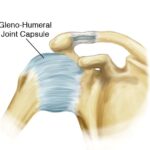Massage Therapy Helps Achilles Tendon Pain, Cambridge, MA
January 10, 2025

The Achilles tendon connects the calf muscles to the heel of the foot. Together, they create the power of the push-off as we walk. The calf muscles are one of the most powerful muscle groups in the body, and the Achilles tendon is one of the thickest and strongest tendons we have.

When you engage the calf muscles, they pull on the Achilles tendon, pushing the foot downward and propelling you forward. This action enables you to walk, run, jump, and stand on the balls of your feet.
The Achilles tendon carries a person’s entire body weight with each step. Depending upon the speed and terrain, each Achilles tendon may be subjected to up to 12 times a person’s body weight during our push-off in walking or running. That’s between 300 to 1500 pounds placed on the Achilles tendon.
The phrase “Achilles heel” has its roots in Greek mythology. It symbolizes a person’s weak and vulnerable areas. It literally means that if someone severely injures your Achilles tendon, you are defenseless.
Confirming the Injury

When the Achilles tendon is injured, it may hurt to walk, run, or stand on the balls of your feet. Resting the tendon is difficult because you can’t walk without using it. The first step is to confirm that the Achilles Tendon is actually injured. Stand with your feet parallel to each other and hold onto something for balance. Now, rise onto the balls of your feet and see if that hurts in your Achilles tendon. If that doesn’t do it stand only on the injured foot pain to the same thing. That will usually be painful if the Achilles tendon is injured.
Finding the Achilles Tendon
With your thumb and index finger, touch the tendon right above your heel. Gently squeeze the tendon and work your way up toward the calf. You’ll notice that the tendon gets wider as you go higher and transition into the muscle. Injuries usually occur in the thin segment of the tendon. There are multiple places where the injury can occur. It could be on the sides of the tendon where you’re squeezing or the back or the front of the tendon. There can be multiple areas of strain or just one spot.

Rest and Self Care
If you choose to rest to see if the tendon heals, you must relieve the pressure on it while you walk. Walking barefoot or with flat shoes usually hurts. So you need to have a shoe with an elevated heel. You can do this by wearing boots with a one—to two-inch heel. You know the heel is the right height if you can walk with the boot on and have no discomfort.

A therapist skilled in the assessment and treatment of injuries can locate the injured area or areas and help you get better faster. The goal of the treatment is to get rid of the adhesive scar tissue that has formed and allow the tendon to heal.

As you improve, adding a series of exercises to strengthen the tendon helps you improve more effectively.


Watch this blog for more patient safety recommendations, and if you’re in need of a professional massage therapist who focuses on chronic pain relief and rehabilitation, schedule an appointment or a complimentary 10-15 minute phone consultation.
Schedule an Appointment or Call →
Ben E. Benjamin holds a Ph.D. in Sports Medicine and was the founder and President of the Muscular Therapy Institute in Cambridge, Massachusetts. He is the author of dozens of articles on working with injuries and chronic pain as well as the widely used books in the field, Are You Tense?, Exercise Without Injury and Listen To Your Pain: The Active Person’s Guide to Understanding, Identifying and Treating Pain and Injury. Dr. Benjamin has been in private practice for over 50 years and teaches therapists throughout the country.
Related Posts

What are Holistic Approaches to Relieve Scar Tissue Pain?
Question: What is the common denominator of chronic pain?
Answer: ADHESIVE SCAR TISSUE

Can Massage Help Pain that Travels? Cambridge MA
Question: Why does an injury to the neck cause pain that travels to the arm and hand? Answer: Referred Pain Pain that travels in your body is called Referred Pain. This phenomenon means the injury is in one place, and the pain is in another. Understanding this phenomenon helps you better understand your body’s responses […]

Can Massage Therapy Help Lower Back Pain Cambridge, MA?
Lower back pain is experienced by at least 50 million people each year in the United States alone. My own severe back pain when I was a teenager is what led me into this field. Back pain is often a debilitating, terrible experience. But it can also be annoying and limiting. I’ve treated hundreds of […]

Massage Therapy for Chronic Neck Pain Near Cambridge, MA
Question: What’s the most common cause of chronic neck pain? Answer: Ligament sprains The Causes of Pain in Your Neck For many reasons, your neck can be painful, but most people are unaware of the most common cause of chronic neck pain. Sprained or severely injured muscles can cause pain in the neck, but muscles […]

Can a Massage Therapist Fix a Frozen Shoulder in Cambridge, MA
Question: Does a frozen shoulder always go away with time? Answer: Often no. The Causes of Frozen Shoulder A frozen shoulder can be incredibly painful. The pain originates in the shoulder joint. A joint is formed where any two bones meet. It’s the enclosed space between your upper arm bone, the humerus, which is […]
